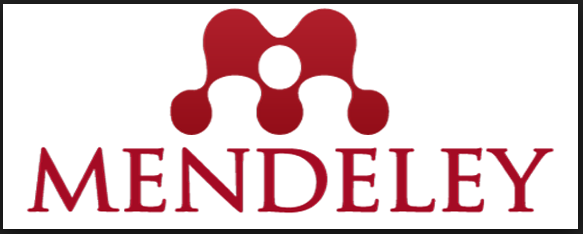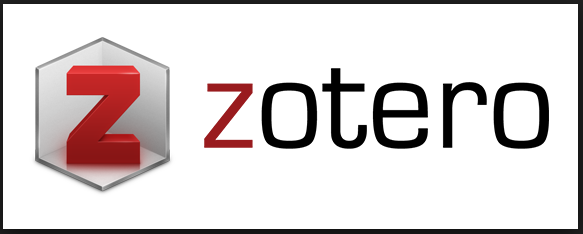| Menu |
| Focus and Scope |
| Author Guidelines |
| Online Submission |
| Editorial Team |
| Reviewer |
| Publication Ethics |
| Screening for Plagiarism |
| Statement of Originality |
| Article Processing Charge |
| Template Journal |
 |
| References Tools |
 |
 |
 |
| INDEXING |
 |
|
|
All articles submitted to the editorial staff will go through a preliminary review process by the Editorial Board. This process is allocated time for two weeks. Then, the next selection of articles will be sent to peer reviewers for further review. Each manuscript will be reviewed in terms of substantial and technical aspects. The peer review team is all experienced in managing and publishing national and international academic journals. This process is allocated time for two weeks. The articles will be returned to the authors for revision as soon as the double-blind review process is complete. This process is allocated time for two weeks.
General Provisions
Systematic Writing of Original Article
Use the following template to write articles. Please copy the contents of your paper into the following template.
The template already has the styles needed for writing. please save your article in *.doc / *.docx format. Please do not send articles in *.pdf format to make it easy for information and review purposes.
The title consists of 15-20 words written in capital letters, 14pt Times New Roman font formatted in bold, and one space. Author's name (without title) accompanied by prize and email address.
Abstract written in Indonesian using Times New Roman font size 10 pt. Abstract consists of a maximum of 300 words, and it describes the background, methods, results, and conclusions.
KEYWORDS Keywords written in Indonesian are 3-5 words. Each keyword is separated by a semicolon (;).
Abstract written in English. If the manuscript is in English, it is enough for the English abstract to be printed, not italicized, and there is no need for an Indonesian abstract. If the manuscript is in Indonesian, all abstracts and keywords are italicized. Abstract consists of a maximum of 300 words, and it describes the background, methods, results, and conclusions.
KEYWORDS Keywords written in English are 3-5 words. Each keyword is separated by a semicolon (;).
The introduction section explains why the problem needs to be investigated (the significance of the study) and all supporting data or scientific evidence based on observations, other research results, or community involvement issues in society. The formulation of this research problem is always based on actual conditions and scientifically objective
This section builds on original research related to community engagement programs. Community involvement is meaningful to the community, applying science and technology based on their fields, increasing the capacity of community services, and empowering communities.
This section is supported by a literature review used to support the concept of service. The author presents a preliminary literature review (references to journal articles and proceedings at conferences) and the most recent references in the last ten years). A literature review is not limited to theory but also empirical evidence. Enrich this introductory part with efforts that other parties have made.
Manuscripts are written using this template (click here) in MS. say. Manuscripts are typed one spaced using A4 size paper (210 x 297 mm), margins (right, left, top, bottom) are 2 cm each. Manuscripts are typed with a single-column layout—Times New Roman font size 12 pt. Manuscripts are written according to EYD guidelines, writing foreign words or terms using italics (italics), but you should avoid using foreign terms to speak Indonesian. The new paragraph starts 5 mm from the left border. The length of the manuscript does not exceed 5000 words, including the bibliography (excluding abstract). The citations in this section are written according to the IEEE style, and it is recommended to use one of the reference management applications such as Mendeley, Zotero, or EndNote.
The method section describes the method used by the author to answer existing research problems. The method must be straightforward with the location and time of the study, the population and research sample, research variables, and research data. Describe the basic procedures used during the study, including selecting study subjects and observational and analytical methods. Your manuscript method also details your community engagement program. Define the primary outcomes measured for each subject group on the implementation of community engagement
Community service is an effort to disseminate science, technology, and art to the community. These activities must provide an added value for the community, both in economic activities, policies, and behavior change (social). Describe that service activities have provided changes to individuals/societies and institutions both in the short and long term.
This section contains the results obtained by the author during the study. The research results are presented first in their entirety, followed by a discussion process. The discussion is presented systematically from the general, leading to the specific. Research presentations can be done with the help of tables, drawings/graphs, maps/plans, and schematics.
The conclusion should indicate the results obtained, the advantages and disadvantages, and the possibility of further development. This section contains conclusions from all the writings in the manuscript. Provide conclusions on the level of achievement of the target of community empowerment activities. Provide suitability of methods used in community empowerment activities with community problems, problems, and needs. Summarize the impact and benefits of community empowerment activities and provide suggestions for further community empowerment. Conclusions should be in the form of paragraphs, not in the form of bullet points.
The thank-you note lists the people who assisted community empowerment activities. When funding comes from a grant available from a university, college, or other research institution, include the name of the institution or organization that provided the funding.
Writing the bibliography using the IEEE style format according to the order of citations in the paper manuscript. References are listed in numerical order, and they are cited in the text in the same order. Identify references with Arabic numerals (1, 2, 3, 4, 5, 6, 7, 8, 9) as superscripts in order of appearance. The bibliography must contain reference libraries sourced from primary sources (scientific journals and a minimum of 80% of the comprehensive bibliography) published in the last five years and 20% secondary sources (books) published in the previous 10 (ten) years. Each article contains at least 10 (ten) reference bibliographies. Writing a reference system in the article text and writing a bibliography is recommended using a reference management program such as Mendeley, Zotero, or EndNote.
Example Of Writing References using IEEE style:
[1] H. Gu, Y. Cui, H. Zhu, R. Xue, and F. Si, “A new approach for clustering in desulfurization system based on modified framework for gypsum slurry quality monitoring,” Energy, vol. 148, pp. 789–801, Apr. 2018.
[2] A. Nath and K. Subbiah, “Maximizing lipocalin prediction through balanced and diversified training set and decision fusion,” Comput. Biol. Chem., vol. 59, pp. 101–110, Dec. 2015.
[3] C.-L. Liu, T.-H. Chang, and H.-H. Li, “Clustering documents with labeled and unlabeled documents using fuzzy semi-Kmeans,” Fuzzy Sets Syst., vol. 221, pp. 48–64, Jun. 2013.
[4] P. W. Cahyo, “Klasterisasi Tipe Pembelajar Sebagai Parameter Evaluasi Kualitas Pendidikan di Perguruan Tinggi,” Teknomatika, vol. 11, no. 1, pp. 49–55, 2018.
[5] M. Habibi, “Analisis Konten Jejaring Sosial Twitter dalam Kasus Pemilihan Gubernur DKI 2017,” Teknomatika, vol. 11, no. 1, pp. 31–40, 2018.
[6] R. Lestari, M. Darussalam, F. N. Azizah, dan S. Sipora, “Peningkatan Kemampuan Kader Remaja Dalam Pengendalian Hipertensi Melalui Posyandu Remaja Parikesit,” JICE (The J. Innov. Community Empower., vol. 3, no. 2, hal. 48–56, 2021.
[7] P. Suwondo dan Subekti, Penatalaksanaan Diabetes Melitus Terpadu. Jakarta: Balai Penerbit FKUI, 2014.
| Menu |
| Focus and Scope |
| Author Guidelines |
| Online Submission |
| Editorial Team |
| Reviewer |
| Publication Ethics |
| Screening for Plagiarism |
| Statement of Originality |
| Article Processing Charge |
| Template Journal |
 |
| References Tools |
 |
 |
 |
| INDEXING |
 |
|
|
ISSN 2985-6868 (Online)
Lembaga Penelitian dan Pengabdian kepada Masyarakat (LPPM)
UNIVERSITAS JENDERAL ACHMAD YANI YOGYAKARTA
Kampus 1:
Jl. Siliwangi, Ringroad Barat, Banyuraden, Gamping, Sleman
Daerah Istimewa Yogyakarta 55293
Telp. (0274) 552489, Email. hbj.unjaya@gmail.com

This work is licensed under a Creative Commons Attribution-ShareAlike 4.0 International License.
